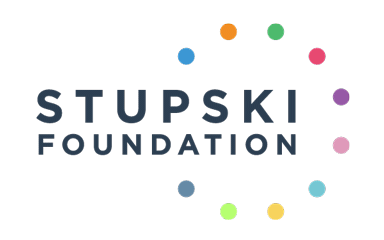The long term prospects for our communities are directly influenced by the opportunities we create for our keiki and ‘ōpio. Partnerships of all sizes across the education continuum are necessary for that collective effort to succeed.

The future of Hawai‘i and its culture are perpetuated through our keiki. For years the high cost of living has driven young families to relocate to the continent in record numbers, with no end in sight. As this trend continues we lose more than just another neighbor or family member, we stand to lose Hawai‘i’s aloha and the children who carry the soul of our home.
One of the fundamental ways to reverse this trend and preserve our Hawaiʻi is to promote the resilience of our communities by fully supporting partners across our unique educational landscape. Strategies include collaborating with institutions to deploy innovation across the system as well as investing in community-based groups whose work can reverse long-standing inequities. By collectively strengthening organizations of all sizes, we have an opportunity to reclaim a Hawai‘i where aloha lives on and every student can confidently choose to live, work, and thrive in the community they call home.
The Post-Secondary Landscape
The education system in Hawai‘i is unique, with its single department of education, and a single public post-secondary system anchored by the University of Hawai‘i (UH) and its satellite campuses across the island chain. While some may feel centralized institutional influence is a hindrance to student achievement, institutional collaborations to support student growth and development help ensure students are prepared for college at any campus. Through programs like automatic admissions and the expansion of early college curriculum for neighbor island students, equitable access is secured for all of our keiki.
One of the most effective collaborations between the Hawai‘i Department of Education (DOE) and the UH system has been forged by the efforts of Hawai‘i P-20, which has helped bridge the systems and promote universal access to postsecondary opportunities so that the college going rate among Hawai‘i high school seniors (now at 51%) can grow. Their emphasis on Career and Technical Education programs has enabled Hawai‘i P-20 to construct workforce education and training opportunities that promote living-wage careers for our students. The DOE and UH System are collaboratively working to ensure that when our students cross the threshold of the graduation stage, they are ready to play an active role in their future whether it entails attending college, entering the workforce, joining the military, or something yet unknown.
Rural Resilience
While most who live in Hawaiʻi wouldn’t trade it for the world, living in an island state isn’t always paradise. Residents living on the neighbor islands have historically encountered unequal access to resources and opportunities, and students from these largely rural communities face barriers and disparities that are often non-existent on the main island of Oʻahu or the continent. For example, a student who lives in Kailua-Kona on Hawai‘i Island would have to travel over one hundred fifty miles roundtrip to attend classes at the sole baccalaureate granting university on the island. Over the course of a semester, and a collegiate career, the physical, mental, and financial costs of that transportation barrier alone is severe.
Maui-based STEMworks helps bridge the gap for students across the state, including those living on neighbor islands. By supporting K-12 educators with resources, inspiration, and tools to promote STEM curriculum, they empower students to achieve academic and professional success in the careers they choose. Together, STEMworks, educators, and students are improving their communities and the world.
While geographic isolation and limited access to resources may present real barriers, the close-knit relationships and kuleana to their āina, keiki, and ʻōpio in Hawaiʻi’s rural communities present many opportunities. Organizations such as Kumano I Ke Ala on the westside of Kaua‘i create ‘āina-based career pathways while investing in the civic development of our youth, using culture to promote and develop leadership skills and build character that are vital for the future of our community.
Organizations that support students in these remote communities are a central element of our partnership strategy. By supporting culturally responsive experiences that provide exposure in engaging formats and introduce young people to a wide range of career possibilities, hand in hand we develop our community leaders of tomorrow.
The Value of Listening
Another important element of our strategy in Hawai‘i is multi-faceted support for our partners throughout the state. As we emerged from COVID, we consistently heard their desire to build community through convenings and events in which they determined the agenda. As we listened deeply, we understood the desire for more autonomy, learning opportunities, and collaborative relationships, and thus we began to release control.
In the wake of devastating wildfires in Lāhainā, it was more important than ever to center the voices of the community. Immediately, we heard that hundreds of students within the University of Hawaiʻi system had their lives upended by the deadly fires and within a week, we provided $1 million in direct cash assistance to get money as soon as possible – with no application necessary – to those affected students to use as they needed.
Listening to what our partners are really saying and being responsive to their needs promotes the kind of collaboration that addresses both underlying challenges and actual needs in direct, meaningful ways.
The Pathways Ahead
Just as there are many pathways to postsecondary success, there are also many pathways to explore as we collectively work to foster a thriving future for Hawai‘i and its people.
We’re still learning where and how our support can catalyze change as a philanthropic partner in Hawai‘i’s educational system. As we do, we’re committed to embracing unconventional approaches and engaging with organizations whose mission and values help create an inclusive, thriving future through the broadest range of educational opportunities for our youth.
About the author
Dr. Cheri Souza is the Hawai‘i postsecondary success program officer at the Stupski Foundation, a spend down foundation based in the San Francisco Bay Area. She leads the Hawai‘i postsecondary success portfolio focused on holistic student support initiatives and work-based learning throughout the islands, with an emphasis on underrepresented students and rural communities. A proud product of the Hawai‘i public education system and a lifelong resident of O‘ahu, Cheri is passionate about helping young people in Hawai‘i discover their talents through education and work-based learning opportunities.

Latest Hawaiʻi News
Read the latest Hawai‘i news about our grant-making, our partners, and how we are spending down

